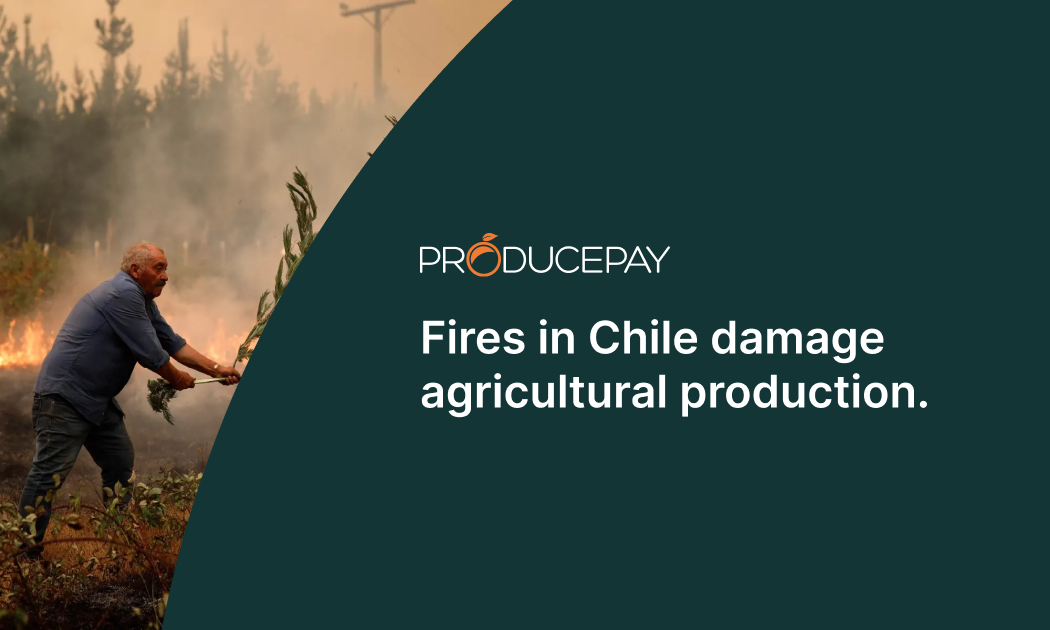
Fires in Chile damage agricultural production.
The Chilean Ministry of Agriculture reported that small farmers in the regions of Maule, Ñuble, Bio-Bio, La Araucanía and Los Ríos have been affected by forest fires, resulting in a total of 3,507 hectares damaged.
The fire primarily affected cherry, lime and blueberry crops and also destroyed essential infrastructure and agricultural machinery, which could have a long-term impact on field operations.
The Chilean Federation of Fruit Producers (FEDEFRUTA) has taken action on the matter, carrying out a census to identify specific needs by region, so that authorities can support the affected farmers as soon as possible.
Fire damage statistics
The Ministry of Agriculture report indicates that the area potentially affected by the forest fires in these five Chilean regions is 413,000 hectares, which comprises fields, native forests, grasslands, bodies of water, wetlands and urban areas, among others.
Of this figure, 55,313 hectares correspond to potential agricultural land (most of them without crops), although only 3,507 hectares of crops have been damaged so far.
The Ministry also reports that the fires have destroyed 6,863 linear kilometers of wire fencing, 137 corrals, 902 warehouses and sheds, 357 greenhouses, 864 hectares of irrigation systems, 254 irrigation huts, 395 accumulation works and 46 wells and norias. In addition, 50 work vehicles, 87 pieces of agricultural equipment and 335 agricultural implements have been lost.
Last but not least, it is estimated that in the regions involved, 90% of the beehives have experienced some damage.
Why are fires in Chile so devastating?
Climate change and drought, terrain orography, the influence of invasive plant species and abandonment of the countryside are some of the factors that explain why forest fires in Chile have been particularly destructive in 2023.
- Climate change and drought: Chile’s ongoing drought is growing worse, and scientists link it directly to climate change, as it has affected the vitality of the soil, made vegetation drier and made it easier for forest fires to occur.
- Wind-favored orography: The orography of the terrain contributes to higher wind speeds, which makes it challenging to control forest fires once they start.
- Influence of invasive plant species: Central and southern Chile are populated by invasive plant species that burn easily and are a source of fuel for forest fires.
- Abandonment of the countryside: Reduced agricultural activity and the abandonment of fields have contributed to the accumulation of weeds and the spread of forest fires. Furthermore, real estate speculation has led many farmers to sell or abandon their land, leaving the countryside more prone to fires.
Considering these factors, the authorities must take preventive measures in the O’Higgins and Maule regions, where the potential for fires is also high. Additionally, the Chilean government has banned agricultural and trash burning until the end of March.
In times of uncertainty, such as when adverse situations affect production, it is critical to have resources to help growers move forward. If you are a grower and need Pre-Season financing to ensure the success of your crop, we invite you to learn about ProducePay’s financing services.
Sources: Minagri, BBC, Portal Frutícola
